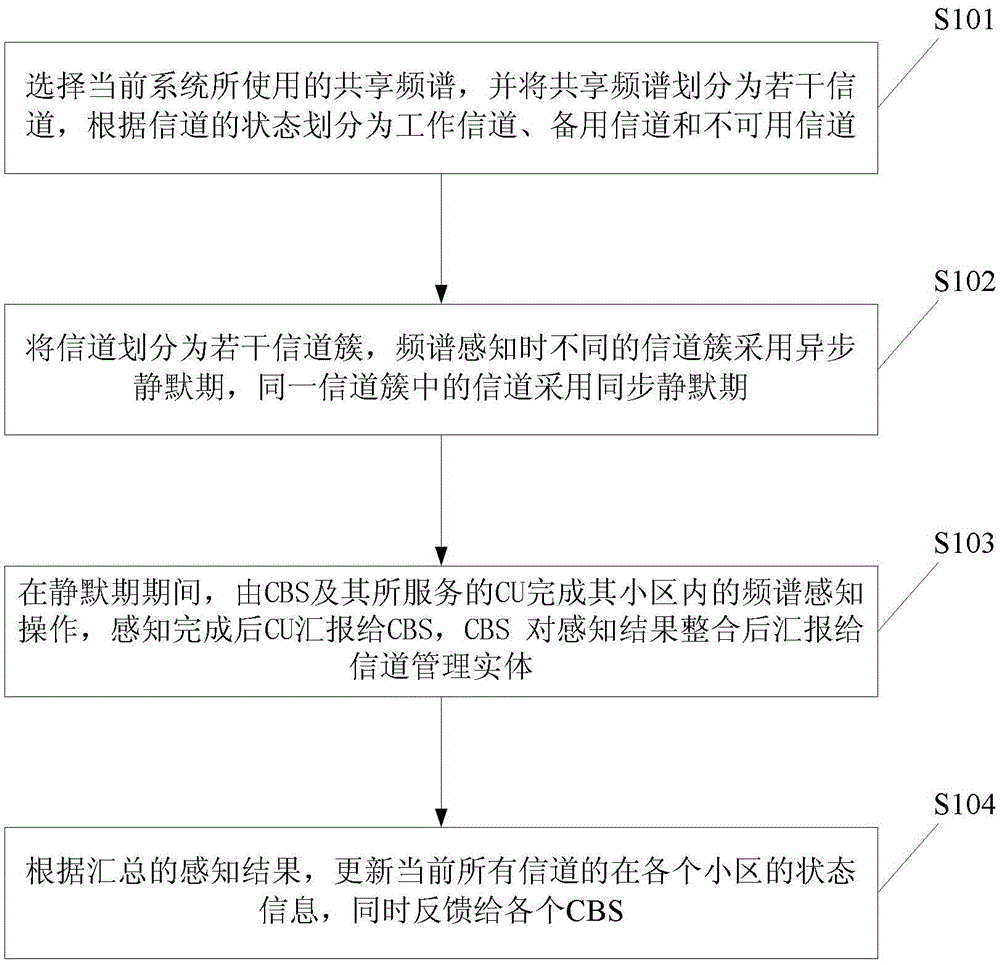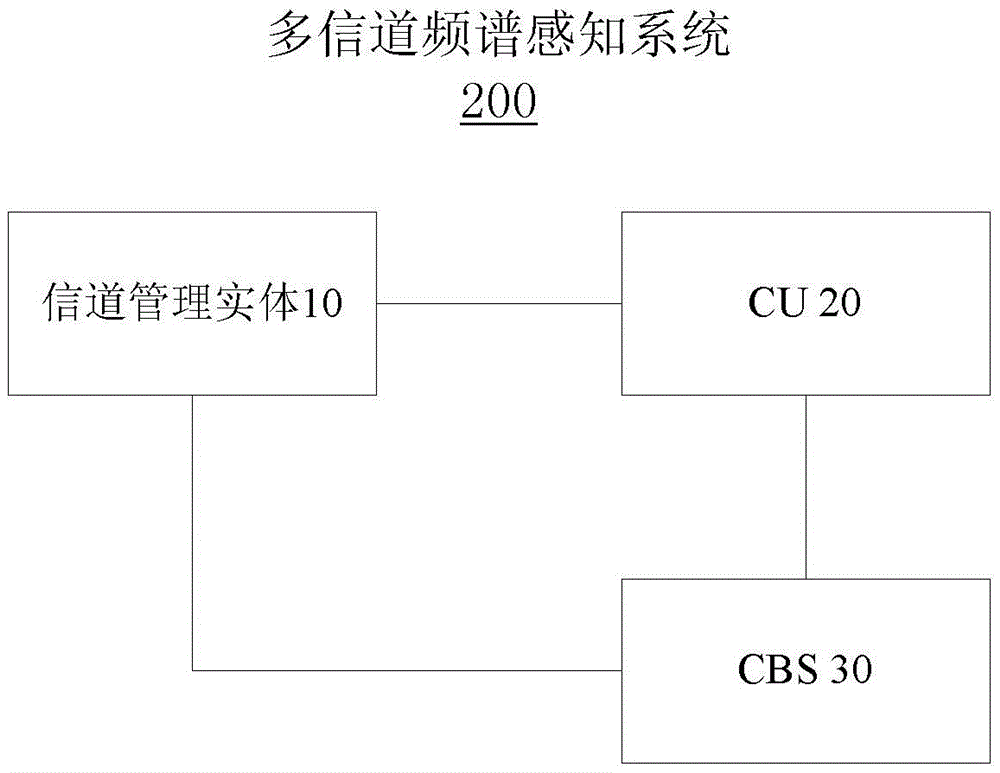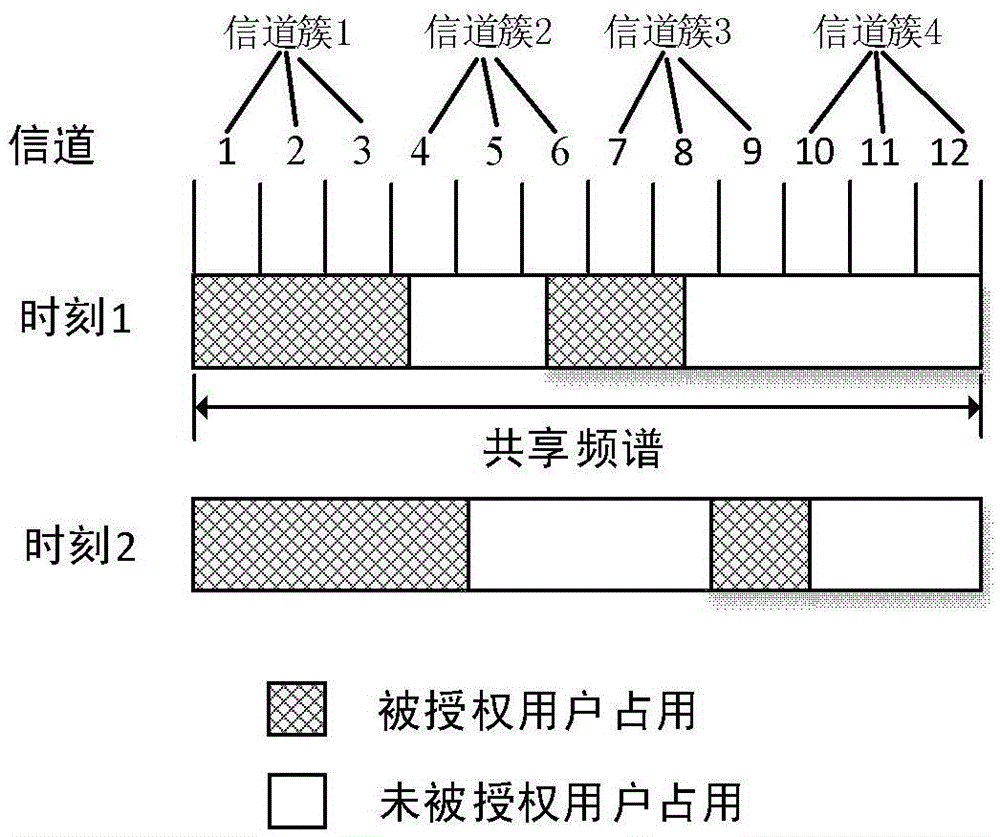Low-power multi-channel spectrum sensing method and system for cellular communication network
A cellular communication network and spectrum sensing technology, applied in the field of cognitive radio networks, can solve the problems of reduced CU working time, increased system operating costs, and no consideration, and achieves the effect of reducing power consumption and reducing the frequency of spectrum sensing.
- Summary
- Abstract
- Description
- Claims
- Application Information
AI Technical Summary
Problems solved by technology
Method used
Image
Examples
Embodiment Construction
[0049] The present invention will be described in detail below in conjunction with the accompanying drawings and specific embodiments, but not as a limitation of the present invention.
[0050] Such as figure 1 As shown, it is the overall flow chart of the low-power multi-channel spectrum sensing method for the cellular communication network of the present invention, and the process includes:
[0051] Step 101, the channel management entity 10 selects the shared spectrum used by the current system, and divides the shared spectrum into several channels, and divides the shared spectrum into working channels, backup channels and unusable channels according to the status of the channels.
[0052] In step 102, the channel management entity 10 divides the channel into several channel clusters. During spectrum sensing, channels in different channel clusters adopt asynchronous silent period, and channels in the same channel cluster adopt synchronous silent period.
[0053] Step 103 ,...
PUM
 Login to View More
Login to View More Abstract
Description
Claims
Application Information
 Login to View More
Login to View More - R&D
- Intellectual Property
- Life Sciences
- Materials
- Tech Scout
- Unparalleled Data Quality
- Higher Quality Content
- 60% Fewer Hallucinations
Browse by: Latest US Patents, China's latest patents, Technical Efficacy Thesaurus, Application Domain, Technology Topic, Popular Technical Reports.
© 2025 PatSnap. All rights reserved.Legal|Privacy policy|Modern Slavery Act Transparency Statement|Sitemap|About US| Contact US: help@patsnap.com



